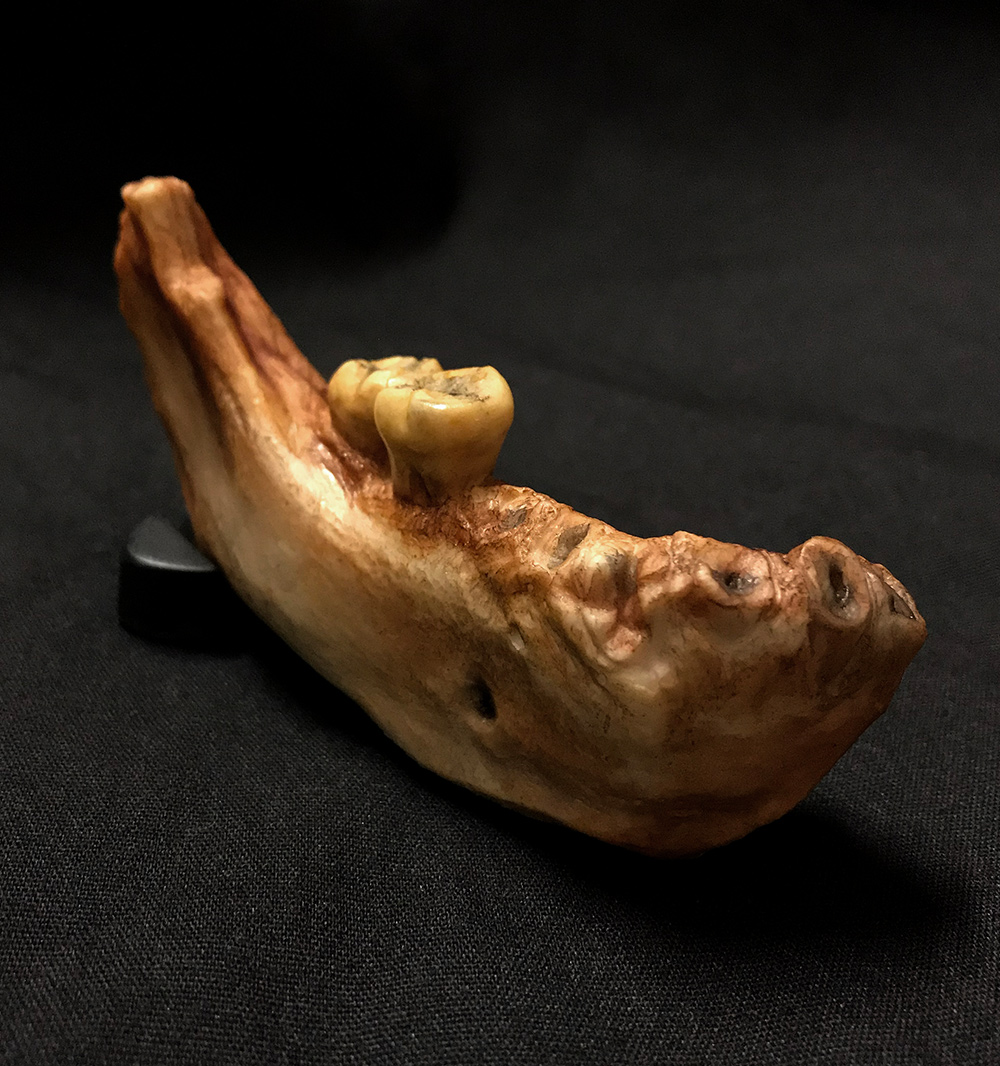Denisovans
Assorted Teeth and Lower Jaw Bone Only - 500,000–30,000 Years Ago
 Denisovans are a mysterious hominin that lived at the same time as Homo sapiens and Neanderthals about 500,000 – 30,000 years ago. The first evidence of this hominin was found in Denisova Cave in the Altai Mountains in Russia in 2008 - a finger bone was excavated and dated to be about 50,000 – 30,000 years old. Results from ancient DNA testing indicated it belonged to a female from an unknown archaic human group. This hominin is related to Neanderthals and modern humans, with enough distinctions to place it into its own classification group.
Denisovans are a mysterious hominin that lived at the same time as Homo sapiens and Neanderthals about 500,000 – 30,000 years ago. The first evidence of this hominin was found in Denisova Cave in the Altai Mountains in Russia in 2008 - a finger bone was excavated and dated to be about 50,000 – 30,000 years old. Results from ancient DNA testing indicated it belonged to a female from an unknown archaic human group. This hominin is related to Neanderthals and modern humans, with enough distinctions to place it into its own classification group.
The Xiahe mandible fragment was found in Baishiya Karst Cave, China in 1980 and is dated to be about 160,000 years old. The mandible displays morphology that is common among other hominins of this time period – thick mandibular body, large teeth with well-developed cusps on the molars showcasing a Y-fissure pattern, and a dental arcade shape similar to Neanderthals. Ancient DNA testing was not possible due to the state of preservation, however, protein analysis was successful.
The high-altitude environment on the Tibetan plateau is quite different from the lower altitude of Denisova Cave, indicating the various environments Denisovans occupied. DNA analysis shows that many people of Indonesian, Tibetan, and Australian descent have traces of Denisovan DNA. Present-day Tibetans, Sherpas, and neighboring populations have inherited a genetic adaptation from Denisovans that aids in surviving in high-altitude environments.
Genetic analysis and mapping reveal Denisovans as cousins of Neanderthals, breaking off about 400,000 – 500,000 years ago. It also suggests that, along with Neanderthals and modern humans, Denisovans either descended from or shared a common ancestor with H. heidelbergensis. DNA sequencing of present-day modern humans, as well as archaic remains, indicates a degree of interbreeding between all three of these closely related, once-coexisting species. There is some evidence to suggest that H. sapiens may have been interbreeding with Denisovans as late as 15,000 – 30,000 years ago.
Read more Australian Museum's Denisovans
- Hominin Skulls - Select a Species
- Ardipithecus kadabba
- Ardipithecus ramidus
- Australopithecus afarensis
- Australopithecus africanus
- Australopithecus anamensis
- Australopithecus garhi
- Australopithecus sediba
- Denisovans
- Homo antecessor
- Homo erectus
- Homo floresiensis
- Homo habilis
- Homo heidelbergensis
- Homo naledi
- Homo neanderthalensis
- Homo rudolfensis
- Homo sapiens
- Kenyanthropus platyops
- Ororrin tugenensis
- Paranthropus aethiopicus
- Paranthropus boisei
- Paranthropus robustus
- Sahelanthropus tchadensis

